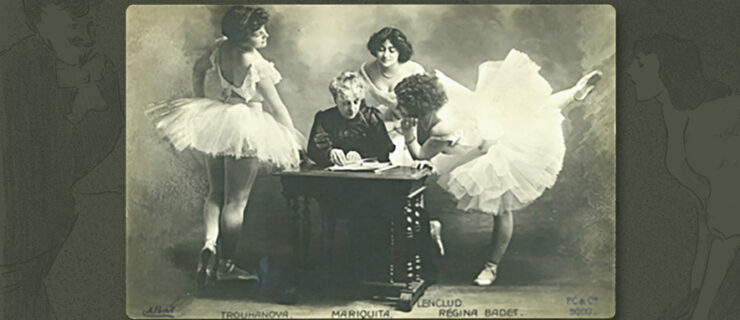5 Things We Learned From Isabella Boylston's Master Class on "Giselle"
Learning a variation for the first time is definitely one of the most rewarding parts of ballet. And when American Ballet Theatre principal Isabella Boylston teaches you that variation as part of a master class series hosted by dancewear brand Cloud & Victory, the whole process gets even more exciting. Dreamt up by Cloud & Victory founder Min, the day-long workshop at Joffrey Ballet School in New York City consisted of a technique class taught by fellow ABT principal Gillian Murphy, as well as variations from both Murphy and Boylston. After Murphy taught Black Swan, Boylston gave the dancers another classic with Act I of Giselle. If you weren’t lucky enough to be among the dozens of aspiring ballerinas gathered at the master class, check out some of Boylston’s tips for learning Giselle at home.
1) Do your homework.
No matter what the variation, if you’re preparing it for the stage, Boylston says to always put in the prep work. “My first big ballet was actually Swan Lake, and I went on YouTube and to the New York Public Library for the Performing Arts and watched [Natalia] Makarova, Margot Fonteyn, just everything I could find,” Boylston tells us. “Then I spent nine months breaking it down with my dance coach Susan Jaffe.”
2) Get into character.
With Giselle, Boylston has a similar approach for preparing for the role, but with the addition of an acting coach. Even without your own mentors, Boylston told the girls in her class to create their own stories to help them relate to Giselle. “When you’re blowing a kiss to Albrecht [before the hops on pointe] pretend it’s Justin Bieber or whoever the cute boy you like is,” she says laughing. “Connecting your steps to a feeling will make the dancing come easier.”
“Try to think about Giselle’s relationships with different characters and what she’s trying to accomplish in each scene,” Boylston advises on adding depth to your performance. “For example, before I enter the stage as Giselle, I’m in the wings and I’m thinking about what she’s doing in her house. I give myself a little back story before each scene so that I’m already in it when I enter the stage.”
3) Articulate each step.
“Giselle is so technical,” Boylston explains to her class while helping them articulate their movements. “You really need to define every little step like the battus at the beginning and each circle of the leg when you hop on pointe.”
4) Lengthen your lines.
When it comes to individual steps, one of Boylston’s biggest corrections was to stretch the beginning arabesque line. “When you do that arabesque into penchée, don’t shorten the line to try to hold the balance,” Boylston says. “Lengthening your body as if there’s a string pulling you forward will actually help you roll through to the next position.”
That rule applies to the double attitude turn into plié, too. “You can’t really spot that turn, but if you pull up on the supporting leg [as you turn] and think of it as one turn and the second turn as a roll through to demi, it’s actually much smoother.”
5) Don’t panic at the end.
With a dizzyingly fast piqué manège to the knee saved for last, Boylston tells the girls to take a breath before starting and make sure to stay on the music. “You don’t need to use your arms as much for this since they’re out to the side,” she says. “Make sure you get to the passé right away in the turns, and by the time your toe hits the ground, your shoulder should already be leading.” To keep from falling onto the knee at the end, Boylston says to slow down your chaînées. “That way you can really sustain the passé turn at the end to control your landing.”





